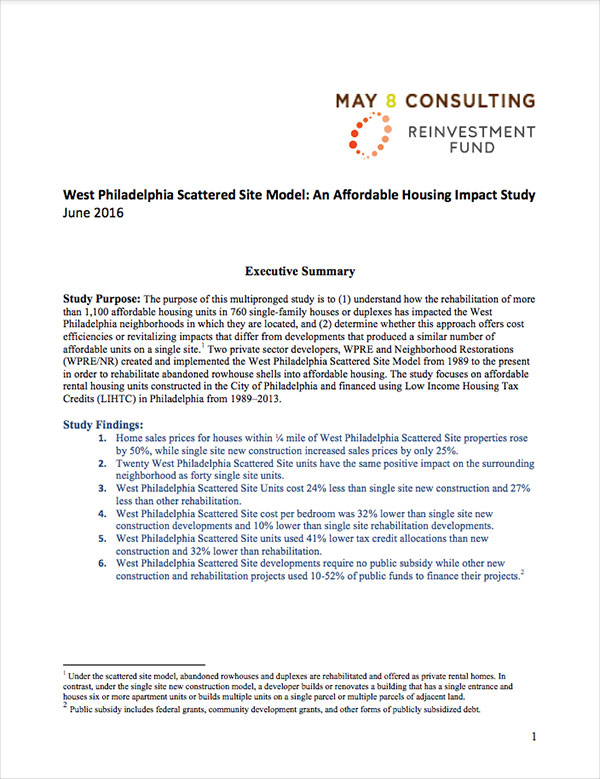In this study, May 8 Consulting and Reinvestment Fund set out to understand how the rehabilitation of 1,100 affordable housing units in 760 single-family houses or duplexes from 1989 to 2013, has impacted the West Philadelphia neighborhoods in which they are located. It compared the scattered site approach to developments that produced a similar number of affordable units on single sites.
WPRE and Neighborhood Restorations (WPRE/NR), two private developers, created and implemented the West Philadelphia Scattered Site Model in 1989 to rehabilitate abandoned rowhouse shells into affordable rental housing. The projects used Low Income Housing Tax Credits (LIHTC) and private financing. The houses are located in some of area’s most economically distressed blocks. The developments led to a direct investment of more than $160 million in West Philadelphia.
Study Findings:
- Home sales prices for houses within a ½ mile of West Philadelphia Scattered Site properties rose by 50%, while single site new construction increased sales prices by only 25%.
- Twenty West Philadelphia Scattered Site units have the same positive impact on the surrounding neighborhood as forty single site units.
- West Philadelphia Scattered Site Units cost 24% less than single site new construction and 27% less than other rehabilitation.
- West Philadelphia Scattered Site cost per bedroom was 32% lower than single site new construction developments and 10% lower than single site rehabilitation developments.
- West Philadelphia Scattered Site units used 41% lower tax credit allocations than new construction and 32% lower than rehabilitation.
- West Philadelphia Scattered Site developments require no public subsidy while other new construction and rehabilitation projects used 10-52% of public funds to finance their projects.
